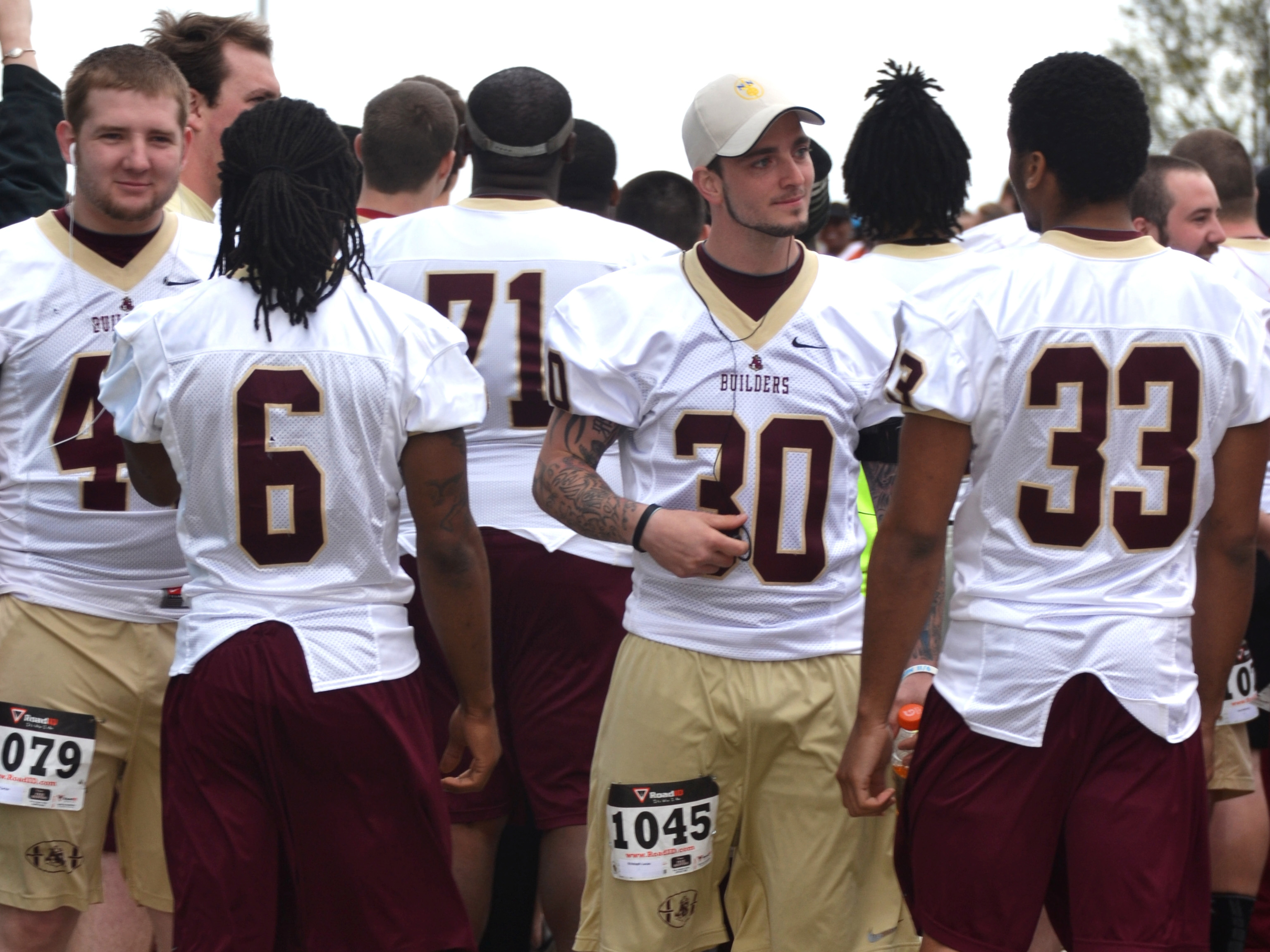History
The birth of the USCAA dates back to July 29, 1966, when athletic directors from the Eastern Shore Basketball League and Lake Erie Conference met in Charleston, West Virginia, to discuss a unique athletic proposition for small colleges. The meeting led to the creation of an eight-team national basketball tournament and the chartering of the National Little College Athletic Association (NLCAA). Del Noble, Robert Anderson, and Al Raskin founded the NLCAA and granted membership to the association’s first ten institutions. Noble, the leader and visionary of the movement, became the association’s first Director of the Board and, later, the NLCAA commissioner.
The association’s sole focus on men’s basketball shifted as membership began to grow rapidly. In response to this growth, baseball (1975), wrestling (1976), and soccer (1977) became the NLCAA’s newest sanctioned sports. The NLCAA hosted its first women’s national championship in 1982 (basketball) and its first volleyball tournament in 1983. In 1989, the association hosted its first softball tournament and was renamed the National Small College Athletic Association (NSCAA).
The NSCAA was reorganized and renamed the United States Collegiate Athletic Association (USCAA) in 2001 with “a clearer vision of providing an association to hold national championships, name All-Americans and scholar-athletes, and to promote USCAA member schools.”
Membership
USCAA membership includes institutions that offer bachelor’s degrees, associate’s degrees, and certificates:
“The USCAA provides a national setting that traditional and nontraditional institutions can strive in. The membership is made up of several types of nationally accredited higher education programs. Member institutions offer four year degrees, associates degrees, and trade opportunities. The USCAA has worked to formulate an association that provides an equal playing field for each type of institution. USCAA members typically have small enrollment figures that range between 500 and 2000. The USCAA is proud of its institutions and their outstanding athletic programs, and wants to provide a place where diverse schools feel welcome and can compete at a national level.” [2]
“To be eligible, colleges must admit student-athletes and non-student-athletes under the same admission standards, and enroll them through the same regular academic procedures. Any institution offering a four- or two-year post-secondary degree/certificate granting program may submit an application to the United States College Athletic Association.” [2]
The association’s governance has discretion in determining which institutions are eligible for membership:
“Colleges in the United States that meet set criteria from the board of directors offering educational quality that meet or exceed criteria that is required to grant the school accreditation.” [2]
“Participation in this association shall be determined by a majority vote of the board of directors upon receiving the membership application. The board of directors shall be nondiscriminatory on the basis of race, religion, or sex when evaluating membership candidates.” [2]
The criteria used to determine an applying institution’s eligibility is as follows:
“Institution is considered a small college. Generally, institutions with fulltime enrollments over 3,000 full-time students will not be considered.” [2]
“Institution has similar resources including but not limited to budget, scholarship monies, human resource, etc. as current member institutions.” [2]
“Institution is on a similar competitive level as other member institutions, as determined by the board of directors.” [2]
USCAA institutions are classified as “Full,” “Provisional,” or “Exploratory” members, depending on their standing with the association and eligibility. Full membership is defined as follows:
“As a full member, institutions will have the opportunity to compete in post-season tournaments, nominate athletes for recognition (Player of the Week, post-season awards, etc.), and attend the National Convention as a voting representative.” [2]
Provisional membership is defined as follows:
“Provisional members will have the same opportunities as Full members within the USCAA without the ability to compete in post-season competition and nominate athletes for All-American awards. Provisional members will have the opportunity to submit athletes for Player of the Week nominations, National All-Academic team, and attend the National Convention as a voting representative. The provisional member institution must submit statistics and eligibility forms to the National Office to remain in compliance with provisional membership status.” [2]
Exploratory membership is defined as follows:
“The Board of Directors will take an academic year to analyze the institution and reevaluate for full or provisional membership to the USCAA. The exploratory institution must submit eligibility forms to the National Office to remain in compliance with exploratory membership status. Exploratory members have the opportunity to access USCAA personnel for consultation and assistance in developing the compliance procedures necessary for full membership.” [2]
USCAA members are not prohibited from joining other governing bodies/organizations, such as the NCAA, NAIA, NJCAA, and NCCAA. USCAA membership provides programs with the opportunity to compete in the postseason, regardless of their dual-affiliation status.

